Winter is a beautiful season to have beautiful sceneries but it is also a season that demands a lot of effort to ensure that the driveway or walkway is safe and clear. This is where snow blowers come in handy, as they enable homeowners to clear the snow in the best way possible. However, as with any other equipment, snow blowers need to be well maintained to be effective during the entire season. Learning the right way to take care of your snow blower will enable you to avoid so many problems and also make your equipment last longer. In this guide, you will learn about the maintenance tips including snow blower motor parts, what tools and materials you will require and how to ensure that your snow blower does not break down. We will also discuss the measures that you can take in case of some of the most frequent problems with the snow blower so that you can do it yourself.
Importance of Snow Blower Maintenance
Maintenance is very important so that you can have a smooth running snow blower during the winter seasons. Failure to service the machine regularly leads to low efficiency, hard starting, or even stalling at the most inconvenient time. Here’s why maintenance is so important:
Improves Performance: Maintenance also helps to check on all the parts to ensure that they are in good working condition thus making your snow blower work harder and clear the snow faster.
Increases Longevity: Maintenance of your snow blower ensures that you do not have to spend a lot of money on repairs or even on a new one.
Prevents Malfunctions: Such basic measures as changing the oil and cleaning the spark plug can help avoid serious breakdowns that can result in a situation when you are left with a useless piece of equipment.
Ensures Safety: A snow blower is a dangerous tool when not functioning properly. This way, problems which may be dangerous for the safety of workers, for example, a worn belt or a failed auger, are avoided.
Some of the basic maintenance activities are very simple and if you do them, you will be certain that your snow blower will not let you down when you are busy clearing the snow.
Looking for top-quality replacement parts for your snow blower, lawn mower, or power tools? Explore our extensive selection, including auger belts, shear pins, scraper bars, paddles, and skid shoes, to keep your equipment running smoothly at WholeToolBox.
Tools and Materials for Snow Blower Maintenance
Before getting started with maintenance, it’s important to have the right tools and materials on hand. Here’s a list of essential items you may need:
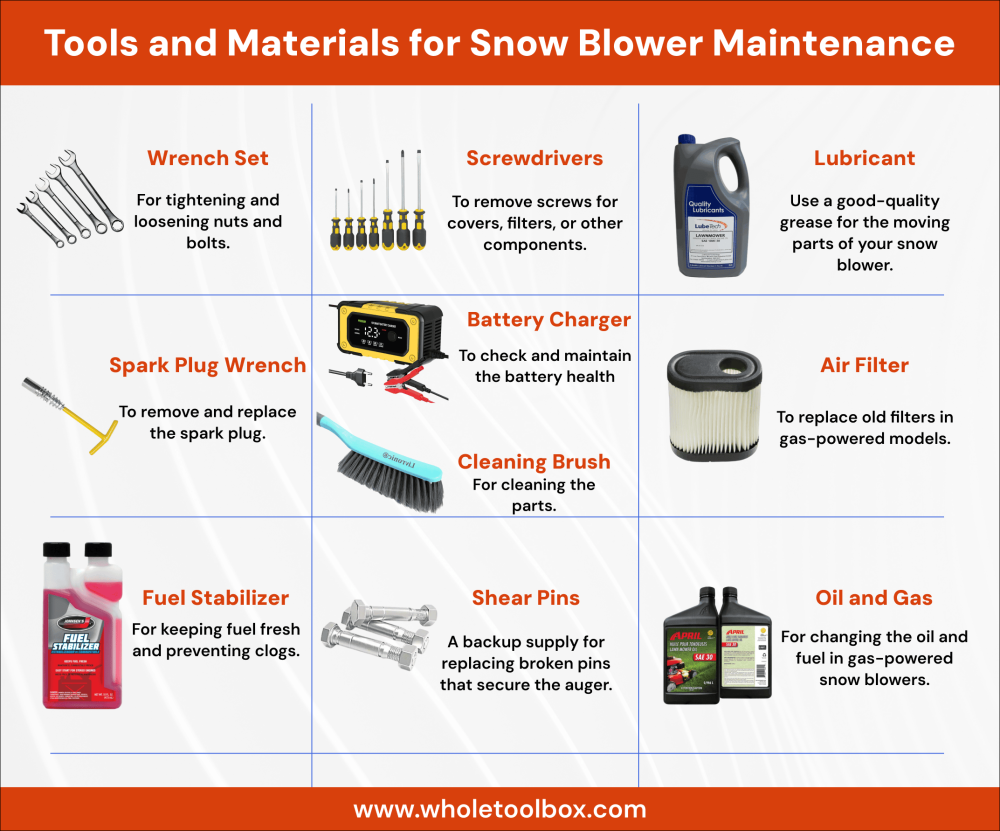
Having these tools ready will make the maintenance process more efficient and ensure that you don’t have to stop halfway through a task to find something you need.
How to Maintain a Snow Blower?
Now that you have the necessary tools, here’s a step-by-step guide to maintaining your snow blower. Following these steps will help ensure your snow blower is ready to tackle any storm.
Inspect and Tighten or Replace Parts as Necessary
Regularly inspecting your snow blower is the first step in maintenance. Walk around the machine and check for any loose bolts or nuts. A snow blower vibrates as it runs, which can cause fasteners to loosen over time. Tighten any loose screws, bolts, or nuts you find.
Additionally, check the auger and impeller for signs of wear. The auger is responsible for gathering snow, and the impeller helps blow the snow out. If either part is damaged or has accumulated debris, clean it off or replace it as necessary.
Change the Oil and Gas on Fuel-Powered Snow Blowers
For gas-powered snow blowers, oil changes are one of the most important maintenance tasks. Over time, engine oil breaks down and becomes less effective at lubricating the engine. A dirty or low oil level can cause engine problems or even permanent damage.
To change the oil, follow these steps:
Warm up the engine by running it for a few minutes (this helps the oil flow more easily).
Turn off the engine and disconnect the spark plug for safety.
Remove the oil drain plug and let the oil drain into a container.
Replace the drain plug, and fill the engine with fresh oil. Refer to your user manual for the correct type and amount of oil.
In addition to the oil, you should also change the fuel. Old fuel can clog the carburetor and lead to starting problems. If you’re storing your snow blower for the off-season, use a fuel stabilizer to prevent the gas from breaking down.
Replace Spark Plug, Fuel, and Air Filter on Gas-Powered Snow Blowers
The spark plug is vital for starting your engine. Over time, it can become dirty or corroded, making it harder for the snow blower to start. To replace it:
Remove the spark plug using a spark plug wrench.
Check the spark plug for damage, and replace it if necessary.
Install a new spark plug and reconnect the wire.
The fuel filter keeps debris out of the engine. Replace it if it looks dirty or clogged. Additionally, a clean air filter ensures your engine gets enough airflow for optimal performance. Inspect and replace the air filter if it’s clogged with dust and debris.
Check the Battery Health on Electric Snow Blowers
For electric snow blowers, the battery is crucial for powering the machine. If your snow blower is struggling to run or not starting at all, the battery may be the culprit.
Here’s how to maintain the battery:
Check the battery’s charge level regularly.
Charge the battery before it gets too low to prolong its lifespan.
Store the battery in a cool, dry place to prevent damage.
Replace the battery if it’s old or no longer holds a charge.
If your electric snow blower uses a cord, ensure that the power cord is in good condition, without cuts or frays, to avoid electrical issues.
Lubricate the Drive and Chassis
The moving parts of a snow blower, such as the drive and chassis, require regular lubrication to prevent wear and tear. Use a high-quality grease and lubricate parts like the auger shaft, gear case, and any other moving parts. Refer to your manual for specific lubrication points.
Lubricating the drive system will help maintain smooth operation and prevent the motor from overworking, which could lead to premature failure.
Check Tires and Chains
Snow blowers with tires should have the proper air pressure to ensure optimal traction, especially in icy conditions. Check the tire pressure regularly and inflate them as needed. Some snow blowers also have chains for added traction—check that these chains are in good condition, and replace them if they’re worn out.
For snow blowers with tracks instead of tires, ensure that the tracks are in good condition and properly tensioned to maintain good grip on slippery surfaces.
Replace Broken Shear Pins
Shear pins are designed to break under excessive force to prevent damage to the auger and drive system. If your snow blower suddenly stops working or makes unusual noises, a broken shear pin may be the cause.
Check the shear pins regularly and replace any that appear damaged or broken. Always keep extra shear pins on hand in case of emergencies.
See That All Your Snow Blower Accessories Are in Working Order, Too
Many snow blowers come with accessories like lights, covers, and snow thrower chutes. Check that all of these accessories are functioning properly. If your snow blower has a chute deflector, make sure it moves freely and doesn’t get stuck. Ensure that the headlights (if available) are working so you can continue working in low-light conditions.
Snow Blower Repair and Troubleshooting
While regular maintenance can prevent most issues, snow blowers can still develop problems. Here are some common snow blower issues and troubleshooting tips:
Snow Blower Won’t Start: Check the spark plug, fuel level, and battery (for electric models). Ensure the fuel is fresh and the carburetor is not clogged. If the engine still won’t start, you may need to clean or replace the carburetor.
Snow Blower Stalls or Loses Power: This can be caused by a dirty air filter, clogged fuel line, or low oil levels. Check the oil, clean the filter, and inspect the fuel lines.
Auger Not Turning: This is often caused by broken shear pins or a jammed auger. Replace any broken pins and clear any debris blocking the auger.
Excessive Vibrations: Check for loose parts, such as the auger, drive belt, or bolts, and tighten them. If the auger blades are worn down, replace them.
Learn how How to Winterize Lawn Mowers: Essential Tips at the End of the Season while you are maintaining your snow blower.
Inspection Checklist to Keep Your Snow Blower Running Smoothly
Here’s a quick inspection checklist to help you stay on top of your snow blower maintenance:
Check the oil level and quality.
Inspect the spark plug for dirt or corrosion.
Examine the air filter for blockages.
Test the fuel system for leaks or clogs.
Ensure the auger and impeller are clear and functioning.
Check tires or tracks for proper inflation and wear.
Lubricate moving parts regularly.
Replace shear pins if needed.
Clean the snow blower after each use.
Proper snow blower maintenance is essential for keeping your machine running smoothly and ensuring that it performs well throughout the winter season. By following the maintenance tasks outlined in this guide, you’ll be able to prevent common issues and keep your snow blower in top shape. Whether you have a gas-powered or electric snow blower, regular upkeep can save you time, money, and frustration.
Remember to inspect your machine regularly, address small issues before they become big problems, and always keep your snow blower clean and well-lubricated. With these simple steps, you can confidently tackle any snowstorm that comes your way.
FAQs
What are the 7 things you should check every year to ensure your snowblower is ready for the season?
You should check the oil, spark plug, air filter, fuel system, auger, shear pins, and tires or tracks to ensure your snow blower is ready for the season.
How often should you change the oil in your snow blower?
You should change the oil in your snow blower at least once a year, preferably before the start of each snow season.

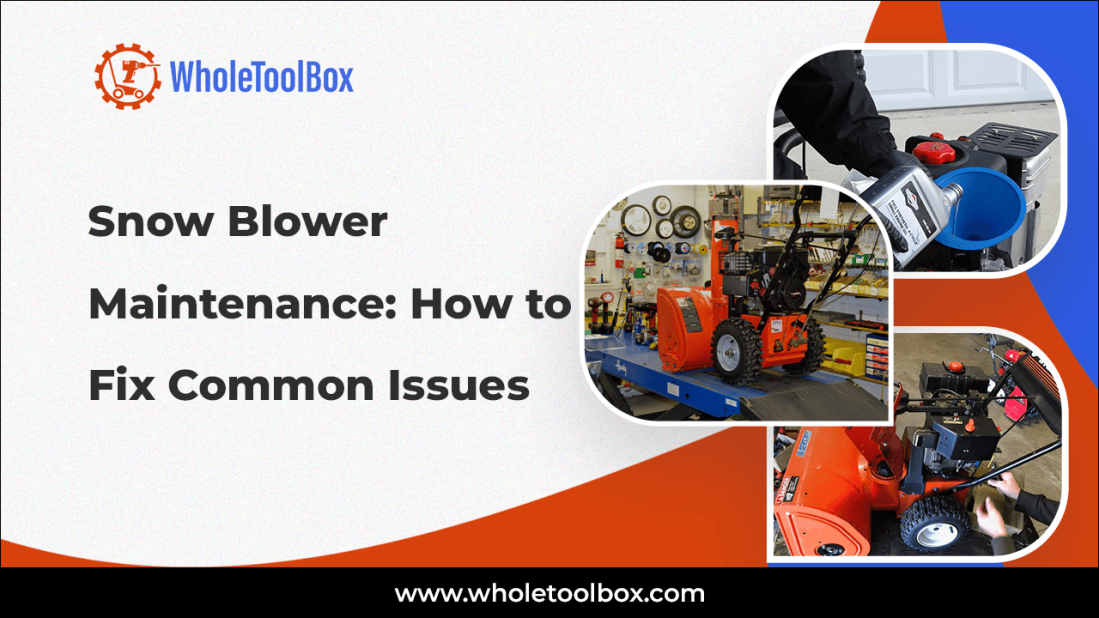
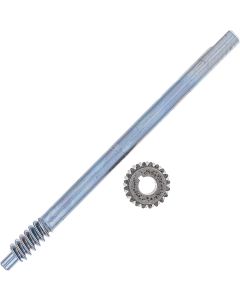
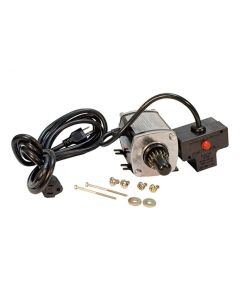
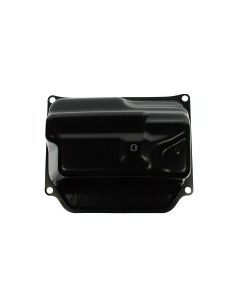
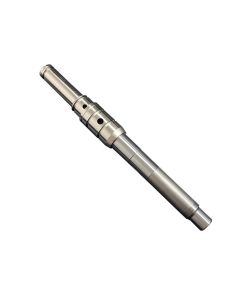
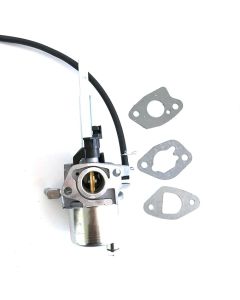


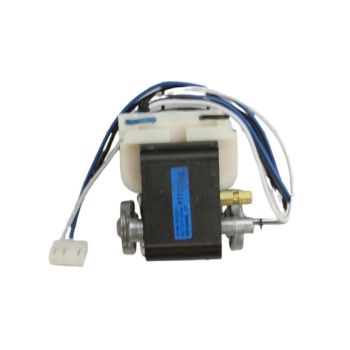
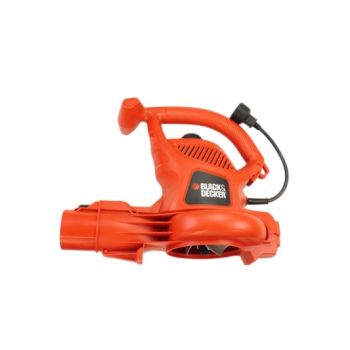

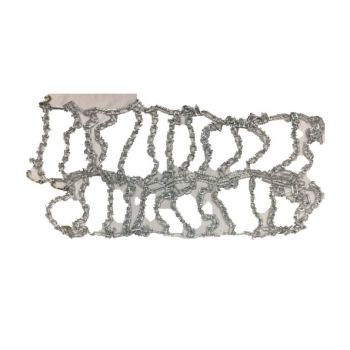
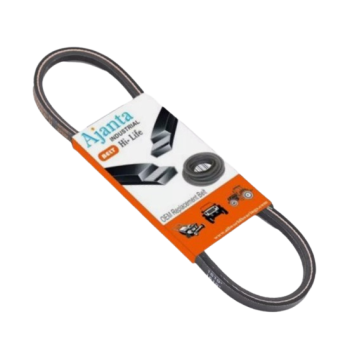
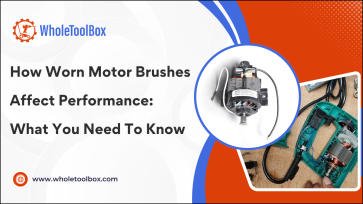
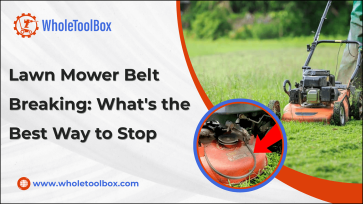

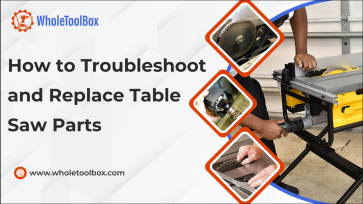

Validate your login